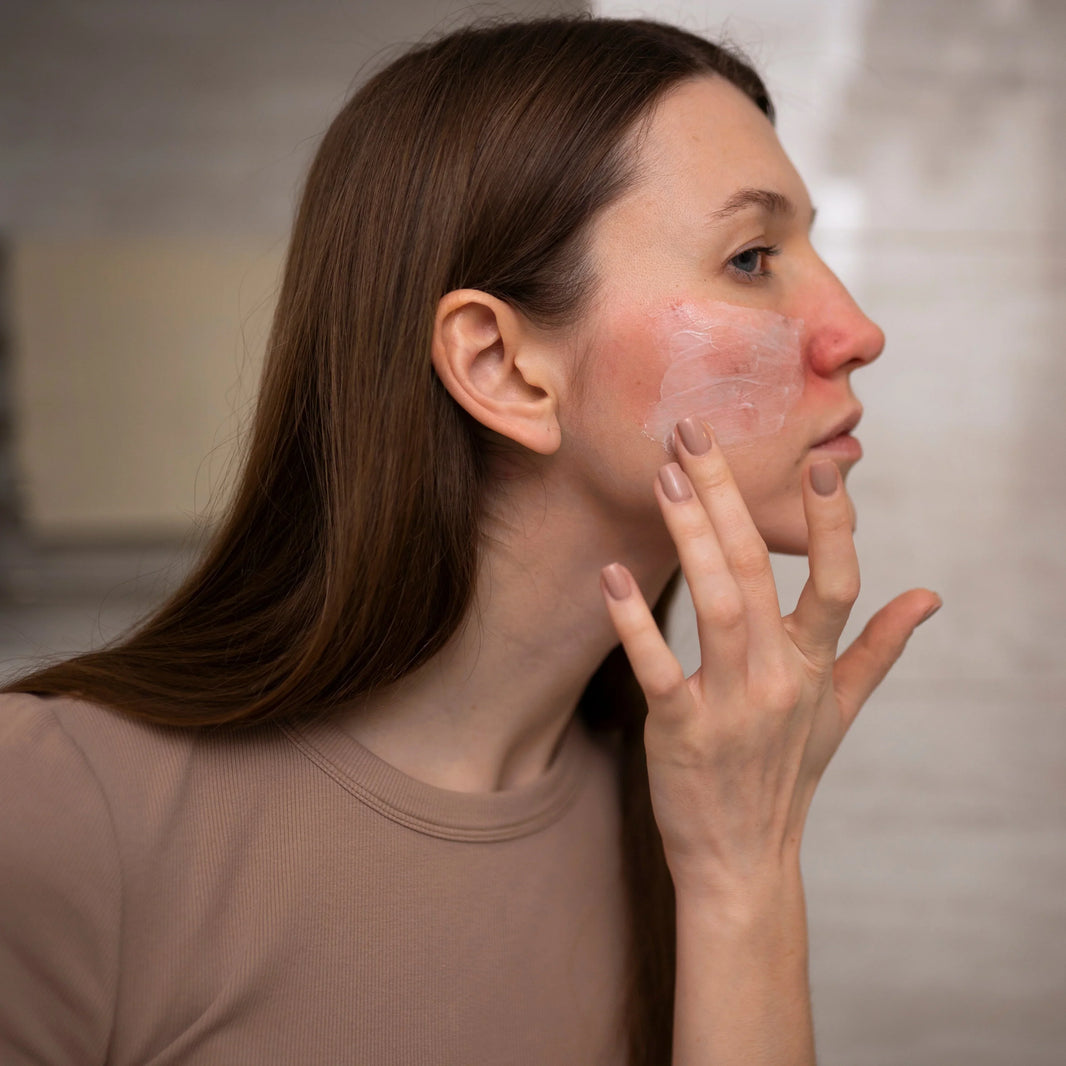Men's healthy hair is characterized by adequate density, thickness, strength, and normal growth patterns supported by proper scalp health. The pursuit of maintaining and improving hair health has spawned numerous treatments and supplements, but distinguishing between scientifically validated approaches and marketing claims requires careful examination of available evidence. Hair health encompasses complex biological mechanisms involving follicular cycling, nutritional factors, and hormonal influences that collectively determine hair appearance, growth rate, and retention.
Biological Foundations of Hair Health
Hair growth follows a cyclical pattern consisting of three primary phases: anagen (active growth), catagen (transition), and telogen (resting). In healthy men, approximately 85-90% of scalp hair is in the anagen phase at any given time. This cycling process is controlled by intricate molecular signaling between dermal papilla cells and hair follicle stem cells, establishing a foundation for understanding interventions targeting hair health. Proper hair care routines contribute significantly to overall hair health, reducing risks of conditions like seborrheic dermatitis and bacterial infections while potentially preventing excessive shedding and damage4.
The hair follicle structure comprises several cellular components working in concert to produce the visible hair shaft. The dermal papilla, a cluster of specialized fibroblasts, serves as the command center for hair growth regulation. These cells respond to various stimuli including hormones, growth factors, and nutritional elements to control the proliferation of keratinocytes that eventually form the hair shaft. When these processes function optimally, men experience normal hair density and thickness with consistent growth patterns and minimal shedding.
Hair Growth Cycle and Regulatory Mechanisms
The transition between growth phases is regulated by numerous molecular signals, with disruptions potentially leading to conditions like telogen effluvium (excessive shedding) or androgenetic alopecia (pattern hair loss). Keratinocyte growth factor plays a crucial role in stimulating proliferation of hair follicle cells during the anagen phase, promoting robust hair growth and development2. Additionally, keratin production represents a fundamental process in hair formation, with increased synthesis correlating with improved follicular development and thicker hair shafts1.
Hormonal regulation significantly impacts male hair growth patterns. Dihydrotestosterone (DHT), converted from testosterone by the enzyme 5-alpha-reductase, has been implicated in androgenetic alopecia by causing follicular miniaturization in genetically susceptible men. This process gradually transforms terminal hairs into smaller, less pigmented vellus hairs, creating the characteristic pattern of male hair thinning. The balance between growth-promoting and inhibitory signals determines the overall health and appearance of hair in men across age groups.
Nutritional Factors in Hair Health
Nutritional adequacy plays a foundational role in maintaining optimal hair growth and structure. Hair follicles are among the body's most metabolically active tissues, making them particularly sensitive to nutritional deficiencies. Essential micronutrients serve as cofactors for enzymes involved in keratin synthesis and cellular energy production within the follicle, supporting the rapid proliferation required during the anagen phase.
Key Nutrients and Their Functions
Amino acids, particularly L-cystine, contribute significantly to hair shaft integrity through their role in keratin production and cross-linking. Clinical studies have demonstrated improvements in hair quality parameters following supplementation with formulations containing L-cystine in combination with other nutrients578. Zinc functions as a crucial cofactor for numerous enzymes involved in protein synthesis and cell division, processes fundamental to hair follicle function. Research has shown associations between zinc deficiency and hair loss patterns, suggesting its importance in maintaining normal hair growth cycles9.
B-complex vitamins, especially biotin (vitamin B7), have garnered significant attention in hair health supplementation. Despite its popularity, evidence supporting biotin's efficacy in individuals without underlying deficiency remains limited11. Research indicates that biotin supplementation may benefit only those with specific pathologies or inherent biotin deficiencies rather than healthy individuals experiencing common hair thinning concerns. Plant-based biotin sources, such as those found in SesZenBio™, may potentially offer advantages through synergistic effects with other naturally occurring compounds12.
Evidence-Based Interventions for Men's Hair Health
Clinical research has identified several approaches demonstrating measurable effects on hair parameters in controlled studies. These evidence-based interventions target various aspects of follicular biology through nutritional, topical, and combinatorial approaches.
Nutritional Supplements with Clinical Support
Multi-component supplements formulated specifically for hair health have shown promising results in controlled clinical trials. A prospective study evaluating a standardized nutraceutical (Nutrafol) demonstrated significant improvements in investigator-rated assessments of hair growth, coverage, density, and volume after 24 weeks of use across diverse ethnic backgrounds3. These benefits were observed in 83.7 percent of male participants, suggesting broad applicability across population segments. The multi-targeted approach addressing nutritional, inflammatory, and hormonal factors may explain these comprehensive effects on hair parameters.
Formulations containing L-cystine, Serenoa repens extract, and biotin have demonstrated efficacy in randomized, controlled trials. One study showed a 23.4% increase in anagen/telogen ratio over baseline in men using this combination, indicating a shift toward more active hair growth phases5. This finding suggests that properly formulated combinations of nutrients may provide synergistic benefits exceeding what might be achieved through single-component approaches. The inclusion of Serenoa repens (saw palmetto) potentially addresses hormonal factors by modulating 5-alpha-reductase activity, thereby reducing DHT's impact on susceptible follicles.
Recent research has explored specialized supplements containing arginine, L-cystine, zinc, and vitamin B6 for addressing telogen effluvium. Clinical evaluation demonstrated improvements in hair quantity and diameter following three months of supplementation with Cystiphane7. These results highlight the potential value of targeted nutritional intervention in addressing specific hair loss patterns with identified pathophysiological mechanisms rather than generalized thinning concerns.
Botanical Extracts and Probiotics
Sesbania grandiflora extract (SesZen-BioTM) has shown efficacy in improving hair metrics in controlled clinical trials. A randomized, double-blind, placebo-controlled study demonstrated 25% improvement in hair density and nearly 17% increase in hair thickness after 56 days of supplementation1. These effects were attributed to enhanced keratin production resulting in improved follicular development, suggesting this botanical extract may target fundamental processes in hair formation and growth.
Topical application of probiotics represents an emerging approach to hair health intervention. Lactiplantibacillus plantarum subsp. plantarum N793, a lactic acid bacterium isolated from corn, has been shown to increase keratinocyte growth factor levels in hair follicle dermal papilla cells2. A double-blind, placebo-controlled study found that application of this probiotic improved hair density in participants with mild progression of hair thinning, though benefits were not observed across all severity levels. This finding suggests that intervention timing and baseline hair condition may influence treatment outcomes.
Herbal water supplements containing multiple botanical components have shown promise in addressing various hair parameters simultaneously. An exploratory clinical study evaluating a multi-component water-based herbal supplement demonstrated improvements in hair growth rate, density, thickness, tensile strength, and reduced hair fall6. These comprehensive effects suggest that multi-targeted approaches addressing multiple aspects of hair biology may offer advantages over single-mechanism interventions for overall hair health improvement.
Interventions with Limited Evidence
Despite widespread marketing and popularity, certain hair health interventions lack robust scientific validation. Understanding these limitations helps distinguish between evidence-based approaches and those requiring further investigation before clinical recommendations can be made.
Biotin Supplementation in Healthy Individuals
Biotin has gained considerable commercial prominence for purported benefits on hair growth, yet systematic review of the literature reveals limited evidence supporting its use in individuals without underlying deficiency. A comprehensive analysis found that while biotin supplementation may benefit cases of acquired or inherited biotin deficiency and certain specific pathologies like brittle nail syndrome, there is "lack of sufficient evidence for supplementation in healthy individuals"11. This disparity between popularity and scientific support highlights the importance of evidence-based decision-making when considering hair health interventions.
Most documented cases of positive response to biotin supplementation involve individuals with underlying metabolic disorders or nutritional deficiencies rather than typical male pattern hair thinning. While biotin remains an essential nutrient for normal hair development, supplementation beyond dietary adequacy may not provide additional benefits in men with normal metabolic function. This understanding suggests that targeted nutritional approaches addressing specific deficiencies may be more effective than generalized supplementation strategies.
General Multivitamins Without Specific Formulations
While nutritional adequacy clearly supports optimal hair growth, evidence for benefit from general multivitamin formulations not specifically designed for hair health remains inconsistent. Studies showing positive effects typically evaluate specialized formulations with specific ratios and combinations of nutrients rather than standard multivitamin preparations. This distinction suggests that the specific composition, dosing, and bioavailability of nutrients may significantly influence outcomes in hair health applications.
The variability in study designs, outcome measures, and participant populations further complicates assessment of general nutritional supplements for hair health. Differences in baseline nutritional status, genetic factors, and concurrent hair loss patterns may all influence response to supplementation, explaining some inconsistencies in reported outcomes across studies. These considerations underscore the need for personalized approaches to hair health intervention rather than one-size-fits-all supplementation strategies.
Conclusion
Research on men's hair health reveals a complex interplay of biological mechanisms influenced by nutritional, hormonal, and environmental factors. Evidence supports several targeted interventions, particularly multi-component nutritional supplements addressing specific pathways in hair growth regulation. Formulations containing L-cystine, zinc, B vitamins, and botanical extracts like Serenoa repens have demonstrated measurable benefits in controlled clinical trials, particularly when tailored to specific hair concerns such as telogen effluvium or androgenetic alopecia.
Emerging approaches including probiotic applications and specialized botanical extracts show promise in preliminary studies, suggesting future directions for hair health research. However, popular interventions like standalone biotin supplementation lack robust evidence in healthy individuals without specific deficiencies, highlighting the distinction between marketing claims and scientific validation. The most compelling evidence supports comprehensive approaches addressing multiple aspects of hair biology rather than single-target interventions, reflecting the complex nature of hair growth regulation.
For men seeking evidence-based approaches to hair health, consideration of nutritional adequacy, hormonal factors, and appropriate hair care practices provides a foundation for maintaining optimal follicular function. Future research focusing on personalized interventions based on individual factors may further enhance outcomes in men's hair health management, moving beyond generalized recommendations toward targeted strategies addressing specific biological mechanisms relevant to each individual's hair concerns.
Citations:
- https://www.semanticscholar.org/paper/7a8efd1f6b7b5c1d6ffa70eb9129ed46835be8c3
- https://www.ncbi.nlm.nih.gov/pmc/articles/PMC11220327/
- https://pubmed.ncbi.nlm.nih.gov/35309272/
- https://www.semanticscholar.org/paper/d8c17db045e4b0db83eebde1200dd6425de2a384
- https://www.semanticscholar.org/paper/b60abc175b7b58e7cf59a4560f88c8c10cf775bd
- https://www.semanticscholar.org/paper/7e2ad1f10bee44199049010fb337ead7146ad7c6
- https://pubmed.ncbi.nlm.nih.gov/37278502/
- https://pubmed.ncbi.nlm.nih.gov/39911983/
- https://www.semanticscholar.org/paper/6d58c0422d3711516553a50494938a8cd8c2548d
- https://www.semanticscholar.org/paper/e02049939457171d37b15dd707149af54121516a
- https://pubmed.ncbi.nlm.nih.gov/28879195/
- https://www.semanticscholar.org/paper/97c0d017e5fb1bbdab5ce4fb167e3fd086f2b695
- https://www.semanticscholar.org/paper/460da6aced6990e2879490a679ced9ea2f1915a5
- https://www.ncbi.nlm.nih.gov/pmc/articles/PMC9508133/
- https://pubmed.ncbi.nlm.nih.gov/33567167/
- https://pubmed.ncbi.nlm.nih.gov/38907829/
- https://www.ncbi.nlm.nih.gov/pmc/articles/PMC1955408/
- https://www.ncbi.nlm.nih.gov/pmc/articles/PMC5515445/
- https://www.semanticscholar.org/paper/7e7f2d03f9b3b9da1ce6460911b49e8530d2e13a
- https://www.ncbi.nlm.nih.gov/pmc/articles/PMC6521794/
- https://www.ncbi.nlm.nih.gov/pmc/articles/PMC7231017/
- https://www.ncbi.nlm.nih.gov/pmc/articles/PMC11597267/
- https://www.semanticscholar.org/paper/8bbc687434d6e8f3d4737b201813e8c55d4b765a
- https://pubmed.ncbi.nlm.nih.gov/16702051/
- https://www.ncbi.nlm.nih.gov/pmc/articles/PMC9140052/
- https://www.semanticscholar.org/paper/cdfc6a227f7f4e9dc9da190f88e2a41d8f879af4
- https://pubmed.ncbi.nlm.nih.gov/27662439/
- https://www.ncbi.nlm.nih.gov/pmc/articles/PMC8527770/
- https://www.ncbi.nlm.nih.gov/pmc/articles/PMC8332470/
- https://www.semanticscholar.org/paper/43400b4e7f1beafacadb60340c388eb285779aea
- https://www.ncbi.nlm.nih.gov/pmc/articles/PMC10442526/
- https://www.semanticscholar.org/paper/2677a852e924d336c82bf9e4f52fcf8822a67bd1
- https://pubmed.ncbi.nlm.nih.gov/38945885/
- https://pubmed.ncbi.nlm.nih.gov/39758217/
- https://www.semanticscholar.org/paper/852aa4290e9f853e2f9d5b1a9b043203145e5d8b
- https://www.semanticscholar.org/paper/6db4f0872581c51f0be9c9b842fd92ba5f1cf827
- https://www.ncbi.nlm.nih.gov/pmc/articles/PMC11163698/
- https://www.ncbi.nlm.nih.gov/pmc/articles/PMC10975403/
- https://www.ncbi.nlm.nih.gov/pmc/articles/PMC11453814/
- https://www.semanticscholar.org/paper/bd2440e3e86491473f6707423d8b5eaa5b80ba43
- https://pubmed.ncbi.nlm.nih.gov/11679042/
- https://pubmed.ncbi.nlm.nih.gov/33834608/
- https://pubmed.ncbi.nlm.nih.gov/6189501/
- https://www.ncbi.nlm.nih.gov/pmc/articles/PMC10884397/








